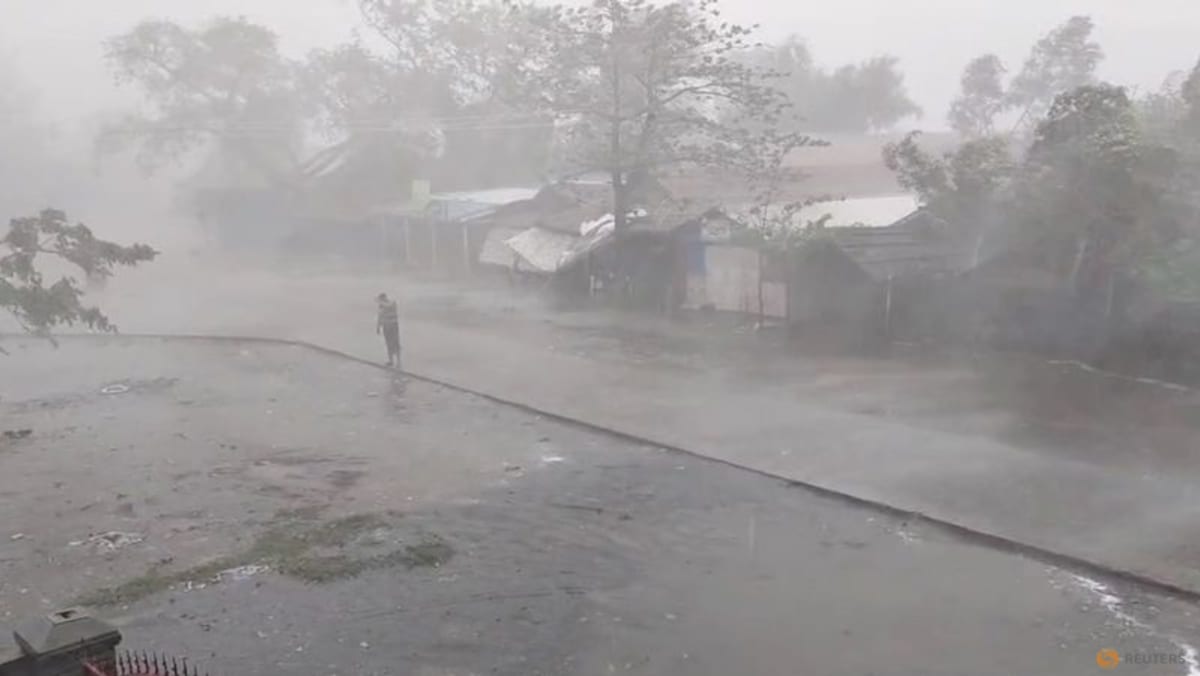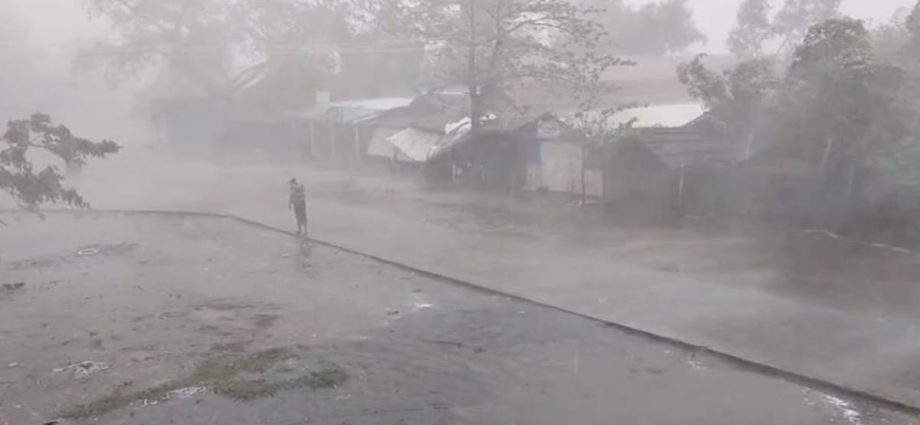
“EXTENSIVE DAMAGE”
The United Nations said communications problems meant it had not yet been able to assess the damage in Rakhine, which has been ravaged by ethnic conflict for years.
“Early reports suggest the damage is extensive,” the UN Office for the Coordination of Humanitarian Affairs said late on Sunday.
Bangladesh officials said they had evacuated 750,000 people.
Secretary of the disaster management ministry, Kamrul Hasan, told AFP on Monday no one had died in the cyclone.
The damage was also minimal in the Rohingya camps, where about a million people live in 190,000 bamboo and tarpaulin shelters, officials said.
“Although the impact of the cyclone could have been much worse, the refugee camps have been severely affected, leaving thousands desperately needing help,” the UN said as it made an urgent appeal for aid.
Jomila Banu, a 20-year-old Rohingya woman from Nayapara refugee camp at Teknaf, said: “The roof of my home has been blown away by the wind, now I am eating rice under the open sky with my children.”
Better forecasting and more effective evacuation planning have dramatically reduced the death toll from such storms in recent years.
Scientists have warned that storms are becoming more powerful as the world gets warmer because of climate change.
Cyclones – the equivalent of hurricanes in the North Atlantic or typhoons in the Northwest Pacific – are a regular and deadly menace on the coast of the northern Indian Ocean where tens of millions of people live.
Cyclone Nargis devastated Myanmar’s Irrawaddy Delta in 2008, killing at least 138,000 people.
The then-junta faced international criticism for its response to the disaster. It was accused of blocking emergency aid and initially refusing to grant access to humanitarian workers and supplies.

